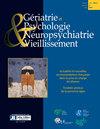[急诊中的 SEGA 虚弱程度量表:回归基础]。
摘要
在急诊科实施的SEGA量表能有效预测发病率和死亡率吗?2018年1月30日至2018年7月16日,肖蒙医院急诊科开展了一项前瞻性研究。研究对象包括 65 岁以上的患者,但不包括 65 岁以下、接受姑息治疗或有生命危险的急诊患者。研究人员计算了每位受试者的SEGAm评分,并在急诊科就诊结束后和一年后对其结果进行了评估。共纳入了 278 名受试者。所有受试者一年后的生命体征都是已知的,没有失访或剔除。一年后,278 名患者中有 56 人死亡(20.1%,95% CI 15.6% 至 25.3%),其中不到一半的死亡病例(n = 25)发生在再次入院后或急诊就诊期间。平均年龄为 82 ± 8.2 岁,其中女性 158 人,男性 120 人。在居住安排方面,130 人(46.8%)住在家中,没有护理人员;100 人(36%)住在家中,有护理人员;48 人(17.3%)住在疗养院。平均夏尔森合并症指数(Charlson Comorbidity Index)为 5.49 ± 1.99,平均用药次数为 7.52。主要转诊方式如下:144 名患者(51.8%)由 C15 转诊,59 名患者(21.2%)由全科医生转诊,58 名患者(20.9%)由自发咨询转诊,8 名患者(2.9%)由家属转诊。55 名患者(19.8%)入院的主要原因是跌倒,33 名患者(11.9%)入院的主要原因是呼吸困难,60 名患者(21.6%)入院的主要原因是其他。急诊科后的处置包括 167 名患者(60.1%)住院,111 名患者(39.9%)出院,在此期间没有死亡病例。SEGAm虚弱评分(网格A)的平均完成时间为8.18分钟(±3.64)分。85名患者(30.6%)的评分≤8分,51名患者(18.3%)的评分在9-11分之间,142名患者(51.1%)的评分≥12分。在这一老年群体中,SEGA评分超过12分的受试者在12个月内的死亡风险估计为31%(95% CI为23.5%至39.3%),而SEGA评分较低的受试者的死亡风险约为10%。SEGA评分超过12分的受试者死亡或再次入院的风险为52.8%(95% CI为44.3%至61.2%),而SEGA评分较低的受试者则为20%至30%。SEGA评分提供了Charlson评分或住院原因无法完全反映的宝贵预后信息。Can the SEGA scale, implemented in the emergency department, effectively predict morbidity and mortality? A prospective study was conducted from January 30, 2018, to July 16, 2018, at the Emergency Department of Chaumont Hospital. Patients aged over 65 were included, while those under 65, in palliative care, or in a life-threatening emergency were excluded. The SEGAm score was calculated for each included patient, and their outcomes were assessed at the end of the emergency department visit and one year later. A total of 278 subjects were included. Vital status at one year was known for all subjects, with no loss to follow-up or censoring. At one year, 56 patients out of 278 (20.1%, 95% CI 15.6% to 25.3%) had died, with less than half of these deaths (n = 25) occurring after readmission to the emergency department or during the emergency visit. The average age was 82 ± 8.2 years, with 158 women and 120 men. Regarding living arrangements, 130 (46.8%) lived at home without caregivers, 100 (36%) lived at home with caregivers, and 48 (17.3%) lived in nursing homes. The average Charlson Comorbidity Index was 5.49 ± 1.99, with an average number of medications of 7.52. The primary methods of referral were as follows: C15 for 144 patients (51.8%), general practitioner for 59 patients (21.2%), spontaneous consultation for 58 patients (20.9%), and family referral for 8 patients (2.9%). The main reasons for admission were falls for 55 patients (19.8%), dyspnea for 33 patients (11.9%), and other reasons for 60 patients (21.6%). Post-emergency department disposition included hospitalization for 167 patients (60.1%) and discharge for 111 patients (39.9%), with no deaths occurring during this period. The SEGAm frailty score (grid A) had an average completion time of 8.18 min ± 3.64. A score of ≤ 8 was found for 85 patients (30.6%), a score between 9 and 11 for 51 patients (18.3%), and a score ≥ 12 for 142 patients (51.1%). In this geriatric population, the risk of death at 12 months was estimated at 31% (95% CI 23.5% to 39.3%) for subjects with a SEGA score exceeding 12, compared to approximately 10% for those with lower SEGA scores. The risk of death or readmission was 52.8% (95% CI 44.3% to 61.2%) for subjects with a SEGA score exceeding 12, compared to 20% to 30% for those with lower SEGA scores. The SEGA score provides valuable prognostic information that is not fully captured by the Charlson score or reason for hospitalization.

 求助内容:
求助内容: 应助结果提醒方式:
应助结果提醒方式:


